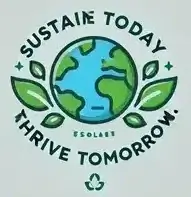Introduction
Did you know that deforestation alone contributes nearly 15% of all global CO₂ emissions? At the same time, air pollution is responsible for around 7 million premature deaths each year, according to the World Health Organization (WHO).
These alarming facts show how deeply people affect the world around them. This relationship is called Human-Environment Interaction. It describes how humans and nature constantly influence each other.
We depend on the environment for clean air, fresh water, fertile soil, and raw materials. But many of our actions—like building cities, farming, and using fossil fuels—cause pollution, biodiversity loss, and climate change.
If we don’t act responsibly, these impacts will get worse over time, harming our health and threatening the survival of many species.
Learning about Human-Environment Interaction helps us understand how our choices shape the planet. With this knowledge, we can make better decisions that protect nature and improve our quality of life.
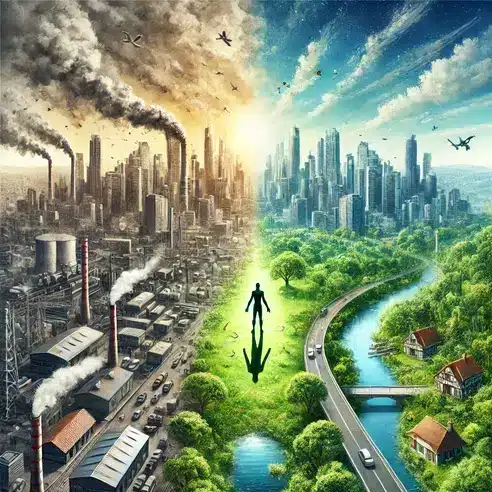
Table of Contents
What is Human-Environment Interaction?
Human-Environment Interaction is the way people affect nature and how nature affects us in return. This relationship can be positive or negative.
- Positive interactions include conservation, tree planting, and using renewable energy.
- Negative interactions include deforestation, air and water pollution, and overusing natural resources.
The big challenge is finding a balance. We need to meet human needs—like housing, food, and energy—while reducing harm to the environment.
This balance is the key to a healthy, sustainable future.
Key Examples of Human-Environment Interaction
Urbanization & Industrialization
Impact:
As cities grow, they spread across forests, wetlands, and farmland. This rapid urban expansion often destroys natural habitats. It also increases pollution and energy consumption.
Did you know cities use about 75% of global energy and produce over 70% of CO₂ emissions? Tall buildings, traffic jams, and factories all contribute to pollution.
Urbanization also causes other problems:
- More waste ends up in landfills.
- Stormwater drains get clogged.
- Natural water sources become polluted.
- Heat islands make cities much hotter than surrounding areas.
Examples:
In Beijing, China, fast urban growth has led to dangerous air pollution levels. Sometimes, PM2.5 particles reach more than 200 micrograms per cubic meter, while the WHO recommends a safe limit of just 5 micrograms.
In Lagos, Nigeria, unplanned development has caused frequent flooding and contaminated water supplies, affecting millions of people.
Solutions:
- Use green urban planning to design eco-friendly cities.
- Create more parks, gardens, and green roofs.
- Expand public transport and bike lanes to reduce car use.
- Enforce emission laws and promote clean energy in industries.
When cities invest in cleaner infrastructure, everyone benefits. Air quality improves, public health gets better, and communities become more resilient to climate change.
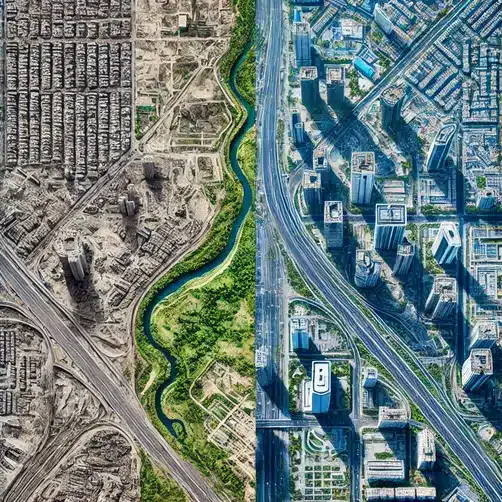
Agriculture & Deforestation
Impact:
Agriculture is essential because it feeds the world. But unsustainable farming practices often damage ecosystems.
- Around 77% of global farmland is used to raise livestock, which produces about 14.5% of greenhouse gas emissions.
- Cutting down forests for crops or grazing causes soil erosion and loss of biodiversity.
- Monocropping depletes nutrients, while pesticides contaminate rivers and groundwater.
Examples:
In the Amazon rainforest, vast areas are cleared every year for soybean farms and cattle ranching. This deforestation destroys habitats and releases huge amounts of carbon dioxide.
In Southeast Asia, palm oil plantations have wiped out rainforests in Indonesia and Malaysia, threatening orangutans and other wildlife.
Solutions:
- Support sustainable farming methods like crop rotation and organic agriculture.
- Integrate trees with crops using agroforestry, which protects soil and improves biodiversity.
- Promote reforestation and forest protection programs.
For example, Brazil has introduced policies to monitor illegal logging, and some companies now commit to using deforestation-free palm oil.

Climate Change & Pollution
Impact:
Burning fossil fuels releases carbon dioxide and other greenhouse gases. These gases trap heat in the atmosphere, causing temperatures to rise.
Since pre-industrial times, the Earth has warmed by 1.1°C. If we cross 1.5°C, scientists warn of dangerous consequences. According to the Intergovernmental Panel on Climate Change (IPCC), limiting warming to 1.5°C requires rapid, far-reaching changes across all sectors.:
- Melting glaciers and rising sea levels.
- More intense storms, floods, and droughts.
- Massive loss of species and habitats.
Air pollution compounds the crisis. Factories, cars, and waste dumps release harmful chemicals like sulfur dioxide and nitrogen oxides, which damage lungs and can trigger heart attacks and strokes.
Examples:
- In California and Australia, wildfires have increased by over 400% in the last 20 years.
- In South Asia, thick smog from vehicles and factories covers cities like Delhi, affecting millions of people.
Solutions:
- Transition to renewable energy sources like solar, wind, and hydropower.
- Enforce stricter pollution controls on industries and vehicles.
- Invest in early-warning systems and disaster preparedness.
Renewable energy not only cuts emissions but also creates jobs and saves money over time.
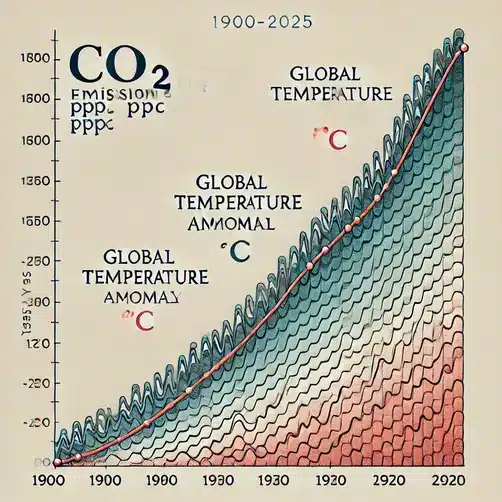
Conservation Efforts
Impact:
While many human actions harm the environment, others help restore it. Conservation protects wildlife, cleans up ecosystems, and reduces carbon footprints.
Positive Human-Environment Interactions include:
- Protecting endangered species and critical habitats.
- Restoring wetlands, forests, and rivers.
- Using renewable energy to power homes and industries.
Examples:
- Costa Rica now generates about 99% of its electricity from renewable sources like hydropower and wind.
- In Kenya, the Green Belt Movement has planted over 50 million trees, improving water quality and creating jobs.
Solutions:
- Encourage tree planting in communities.
- Support clean energy projects.
- Invest in conservation programs that protect biodiversity.
When people work together to care for nature, everyone gains cleaner air, healthier food, and a more stable climate.
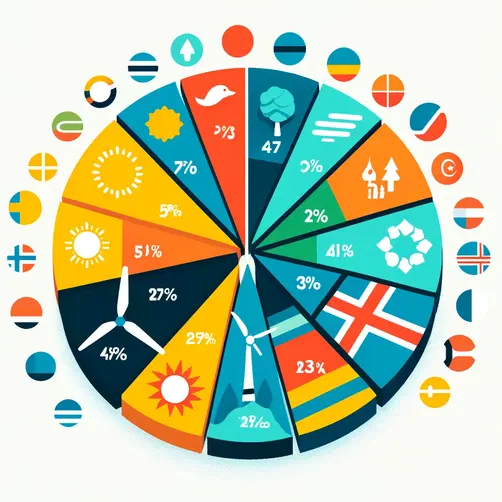
Challenges of Human-Environment Interaction
Environmental Degradation:
Overusing resources leads to deforestation, soil erosion, and pollution. For example, the Aral Sea has shrunk by 90% due to water diversion for agriculture. This disaster destroyed fisheries and caused toxic dust storms.
Health Risks:
Pollution causes many health problems. In India alone, air pollution leads to 1.6 million deaths every year. Contaminated water spreads diseases like cholera and dysentery in many parts of Africa and Asia.
Climate Change:
Rising temperatures are melting glaciers, flooding coastlines, and destroying coral reefs. The Great Barrier Reef has lost over 50% of its coral since 1995 due to bleaching events linked to warmer oceans.
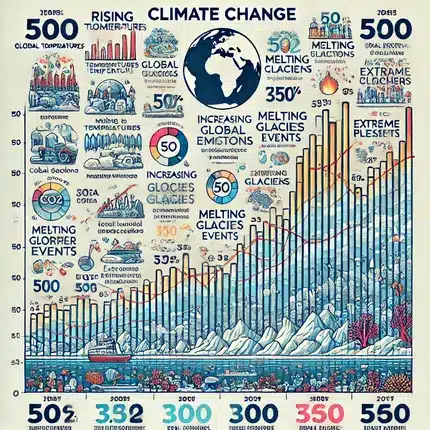
Sustainable Solutions for a Better Future
1. Renewable Energy:
Switching to solar, wind, and hydropower cuts emissions and reduces reliance on fossil fuels. Countries like Iceland generate nearly 100% of their electricity from renewable sources.
2. Sustainable Farming:
Using organic fertilizers, planting diverse crops, and conserving water helps ecosystems recover. The Netherlands leads in precision farming, which increases yields while using fewer chemicals.
3. Green Urban Development:
Eco-friendly cities use green roofs, efficient public transport, and modern waste systems. Singapore’s Green Plan 2030 aims to become a zero-waste, low-carbon city.
4. Stronger Policies:
Governments must pass laws to limit pollution and protect natural resources. The Paris Agreement sets global targets to limit warming below 2°C. The United Nations emphasizes that achieving the Sustainable Development Goals depends on reducing greenhouse gas emissions.
Actionable Steps for Individuals
Here are small steps you can start today:
- Reduce, Reuse, Recycle: Cut down waste by making mindful choices.
- Choose Green Energy: Switch to renewable electricity if available.
- Support Conservation: Volunteer or donate to environmental causes.
- Speak Up: Advocate for strong climate policies and green practices.
- Live Sustainably: Walk, cycle, or take public transport whenever possible.
Each effort contributes to positive change. For more ideas, check out these 10 Sustainable Living Tips you can start using today.
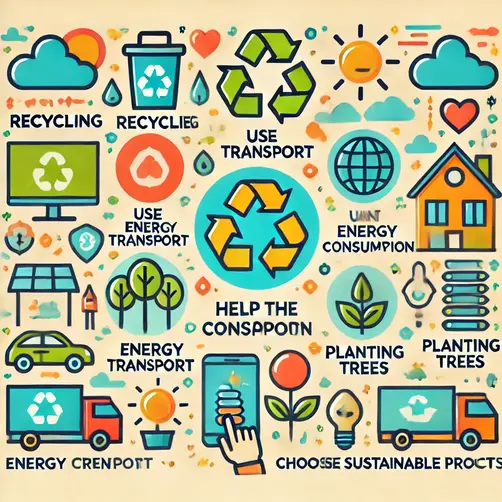
Conclusion
While challenges like climate change and deforestation are serious, solutions exist. When individuals, communities, and governments collaborate, progress accelerates.
Acting today can shape a healthier tomorrow. By learning, sharing, and taking small daily steps, we can build a healthier, more sustainable planet for everyone.
Frequently Asked Questions (FAQ)
What is an example of positive Human-Environment Interaction?
Answer:
Planting trees, using renewable energy, and restoring wetlands are all positive examples. For instance, Costa Rica generates nearly 99% of its electricity from renewables, showing how countries can protect nature while meeting human needs.
How does climate change impact Human-Environment Interaction?
Answer:
Climate change increases extreme weather events, such as floods and droughts, which force humans to adapt by moving, changing farming practices, or building new infrastructure. At the same time, activities like burning fossil fuels accelerate climate change, creating a cycle of impact.
What are the most effective ways individuals can reduce their environmental impact in 2025?
Answer:
Popular solutions include:
✅ Switching to clean energy plans
✅ Reducing single-use plastics
✅ Supporting reforestation projects
✅ Choosing public transport or electric vehicles
✅ Reducing meat consumption
According to a 2023 Pew Research Center survey, interest in zero-waste living has increased by 35% in the past five years.
How does urbanization affect biodiversity?
Answer:
Urbanization destroys habitats, fragments ecosystems, and introduces pollution. This leads to fewer plant and animal species in cities. Green spaces, wildlife corridors, and sustainable planning can help protect biodiversity even as cities grow.
Why is sustainable farming important right now?
Answer:
Sustainable farming improves soil health, reduces pollution, and helps fight climate change. More farmers and innovators are exploring regenerative agriculture and vertical farming to protect ecosystems while increasing food production.
What countries are leading in renewable energy in 2025?
Answer:
Top countries include:
Iceland: Nearly 100% renewable electricity
Sweden: Over 60% renewable energy
Costa Rica: 99% renewable electricity
Germany: Rapidly expanding wind and solar
Many individuals are looking into joining neighborhood solar cooperatives as renewable energy becomes more accessible.
How can schools teach about Human-Environment Interaction?
Answer:
Schools can:
✅ Add environmental science to the curriculum
✅ Start tree-planting and recycling projects
✅ Use documentaries and virtual reality tours
✅ Host clean-up drives and workshops
According to UNESCO, integrating climate change education into classrooms has become a priority worldwide, with thousands of educators adopting interactive lessons and experiential learning projects.
What role do governments play in reducing environmental damage?
Answer:
Governments set laws and policies, such as emission limits, conservation programs, and clean energy subsidies. They also fund research and help communities adapt to climate change. The Paris Agreement is a global example of coordinated action.
About the Author
Soumen Chakraborty is an environmental writer and sustainability advocate passionate about raising awareness on climate change and green living. Through his work, he aims to inspire individuals and communities to embrace eco-friendly solutions and protect our planet for future generations. When he’s not writing, Soumen enjoys exploring nature trails and supporting local environmental projects.
Last update on 07 July 25
References
- IPCC. Climate Change 2023: Synthesis Report. Retrieved from https://www.ipcc.ch/report/ar6/syr/
- FAO. The State of the World’s Forests 2022. Retrieved from https://www.fao.org/state-of-forests/en/
- WHO. Air Pollution. Retrieved from https://www.who.int/health-topics/air-pollution
- Pew Research Center. Sustainability and Consumer Behavior Survey 2023. Retrieved from https://www.pewresearch.org/
Ready to Make a Difference?
Together, we can build a cleaner, healthier world.
✅ Take action today:
- Start by making small, sustainable choices in your daily life.
- Share this article to inspire others.
- Support policies and organizations working toward environmental protection.
🌱 Join the movement—let’s redefine our relationship with nature.
Every step counts.
